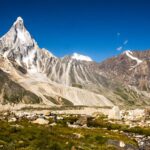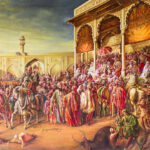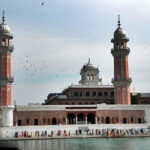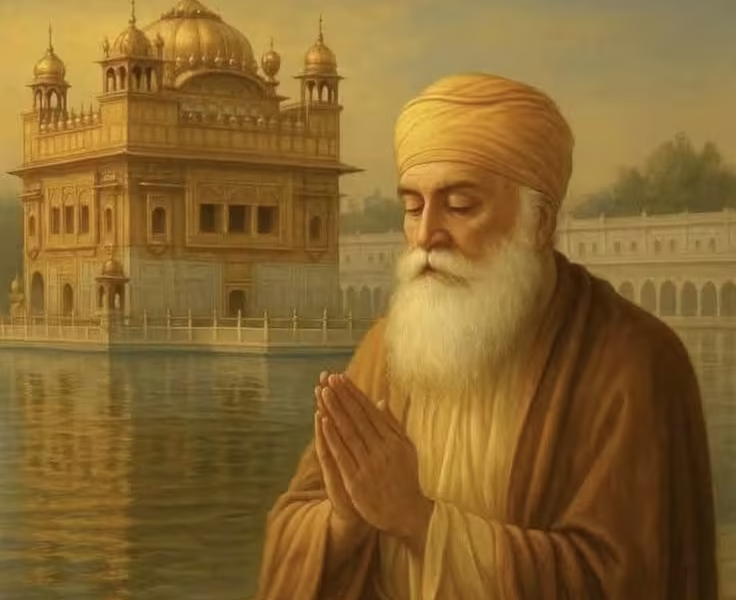Sikhism is a monotheistic faith developed by the Sikh Gurus in the larger Punjab region of the Indian subcontinent during the latter half of the 15th century CE. Sikhism is the fifth-largest organized religion, with over 25 million adherents worldwide. It is also the world’s youngest amongst major religions of the world, that include Hinduism, Islam, Christianity, Judaism, Jainism, and Buddhism.
India
Sikhism originates in India, which has the world’s largest Sikh populace (about 19 million Sikhs), but they are still regarded as a minority.
United Kingdom
Following India, the United Kingdom has the second-largeSikhikh community, with approximately 8 Lakh people.
The United States
The United States The majority of the people live in California.
Canada
You may be astonished to see Canada ranked fourth, but it is real; Canada has a population of about 4 lakh 70 thousand Sikhs.
Malaysia
Malaysia has roughly 1 lakh Sikhs, making it the fifth-largest Sikh population in the world.
Australia
There are 72 thousand Sikhs in Australia.
Italy
Italy has 71 thousand Sikhs, making it the seventh-large Sikh community in the world.
Thailand
Thailand has almost 70 thousand Sikhs, making it the eighth-mottos populous Sikh country in the world.
Pakistan
Before partition, a large portion of Punjab was part of what is now Pakistan, hence a large number of Sikhs lived there. However, following partition, the majority of Sikhs fled to India, but there are still nearly half a million Sikhs in Pakistan.
Philippine
Philippines is ninth on the list, with a population of nearly 35 thousand Sikhs.
Sikhism now has approximately 25 million adherents worldwide, with the bulk of Sikhs living in India, the United States, Canada, the United Kingdom, Australia, Malaysia, and the East African nations of Kenya, Uganda, and Tanzania. India, as the birthplace of Sikhism, has the world’s largest Sikh community. The East Punjab region in the Indian states of Punjab, Himachal Pradesh, Haryana, Rajasthan, Uttarakhand, and Uttar Pradesh, and also the Union Territories of Chandigarh, Delhi NCR, and Jammu and Kashmir, is home to about 90.2 percent of the world’s Sikh populace.
With around 700,000 Sikhs, the United States has the world’s second-largest Sikh population. The United States is home to around 2.22 percent of the world’s Sikh populace, with the majority of the public residing in the Northeastern and Midwestern United States, as well as California, Maryland, Texas, and Virginia. Canada has the world’s third-largest Sikh community, with 454,200 Sikhs living in the country.
Origin of Sikhism
By the time Guru Arjan, the fifth Guru arrived, Sikhism was already rooted. Guru Arjan completed the construction of Amritsar as the Sikh world’s center and compiled the Adi Granth, the first approved book of Sikh scripture. Nevertheless, the authorities saw Sikhism as a danger during Guru Arjan’s reign, and he was later killed for his beliefs in 1606. Hargobind, the sixth Guru, began militarizing the society to prepare them to confront persecution. To keep their faith alive, the Sikhs had to fight several conflicts. Until the Mughal Emperor Aurangzeb, who used force to coerce his subjects to join Islam, the Sikhs lived in relative peace with the political overlords.
In 1699, the tenth Guru, Gobind Singh, resurrected the Sikhs as a military force known as the Khalsa, with the goal to insurability to defend their faith in the future. Guru Gobind Singh created the khandey di pahul (Sikh initiation ceremony) and the 5 Ks, which give Sikhs their distinct appearance. He was the last human Guru on the planet. Sikhs now consider their scriptures to be their Gurus.
Sikhs after Partition of India
In 1947, when British India attained independence, it was divided into India and Pakistan, an Islamic state. Sikhs felt mistreated and chose to join India despite their reservations. Since there were few enough of them to oppose Pakistan’s claims to Punjab, they have been unto establishing their state. Only by partnering with India were they able to maintain a portion of Punjab, albeit at great cost in communal killings. Sikhs were dissatisfied as they had lost many of their rights, including much of their property.
India refused to give in to the Sikh desire for their stathis would have given communalism (i.e. religious groups) an unshakeable stronghold in the politics of what was meant to be a secular state; however, in 1966, India partitioned Punjab into three, reconstructing Punjab as a state with a Sikh preponderance, following years of Sikh demands. This was insufficient to quell Sikh rage at what they perceived as ongoing oppression and the arbitrary manner in which India drew the new state’s borders. They kept pressing the Indian administration for numerous concessions.
Then Punjab established
A cruel and disastrous division of the former British Province of Punjab resulted in the foundation of the unilingual Province of Punjab, a procedure that finally gave rise to three Indian states and a union territory. Following the adoption of the Punjabi Suba demand in 1966, the states of Punjab and Haryana, as well as the Union Territory of Chandigarh, were formed on November 1, 1966, and the hill regions were merged with the Union Territory of Himachal. This was a significant departure from the SRC’s guidelines.
Sikhism is mostly practiced in Indpracticedab province, however, Sikh communities are located on every continent in the world, with the United States, Canada, and the United Kingdom has the biggest total emigrant populations. With 1.7 percent of the overall population, India is the country with the highest percentage of Sikhs.
Despite several decades of exodus and a 3.6 million-strong Punjabi Sikh community, most of the world’s 26.4 million Sikhs live in India, particularly in the East Punjab region, as of 2021. Sikhism has its origins in the East Punjab region, which dates back to the late 15th century.
The Sikh community can be found all over the world, although Surrey and Brampton, Canada, and Slough, United Kingdom, are regarded Sikh population centers outside of India. Sikhs obey their gurus’ teachings, which have spread their religion throughout the world. They teach the dignity of equality and reject discriminatory practices based on caste, creed, or gender.








